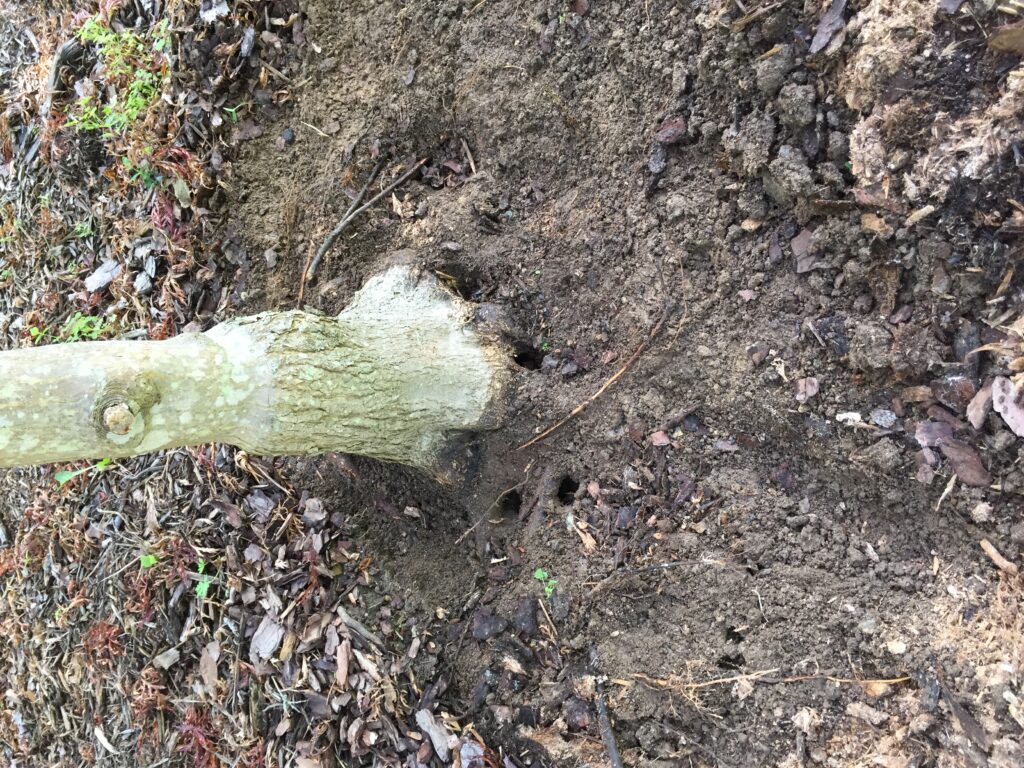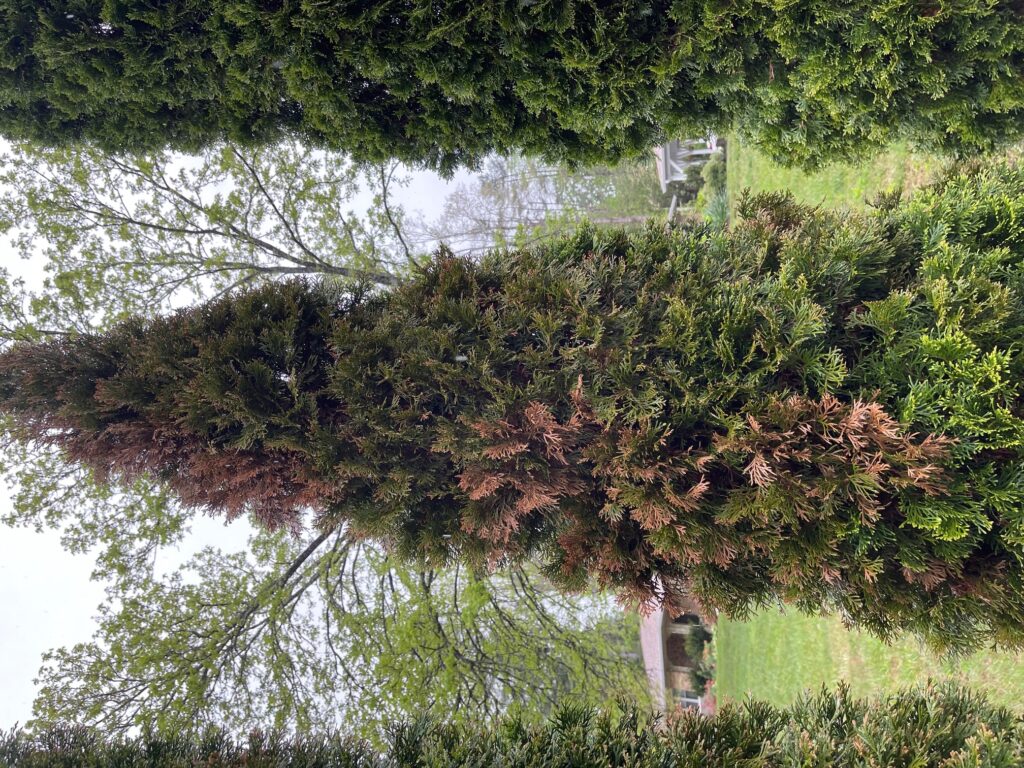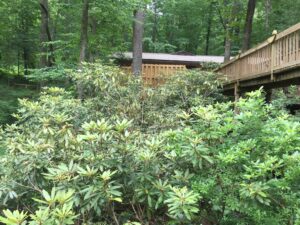Pest Alert – Voles
go.ncsu.edu/readext?789231
en Español / em Português
El inglés es el idioma de control de esta página. En la medida en que haya algún conflicto entre la traducción al inglés y la traducción, el inglés prevalece.
Al hacer clic en el enlace de traducción se activa un servicio de traducción gratuito para convertir la página al español. Al igual que con cualquier traducción por Internet, la conversión no es sensible al contexto y puede que no traduzca el texto en su significado original. NC State Extension no garantiza la exactitud del texto traducido. Por favor, tenga en cuenta que algunas aplicaciones y/o servicios pueden no funcionar como se espera cuando se traducen.
Português
Inglês é o idioma de controle desta página. Na medida que haja algum conflito entre o texto original em Inglês e a tradução, o Inglês prevalece.
Ao clicar no link de tradução, um serviço gratuito de tradução será ativado para converter a página para o Português. Como em qualquer tradução pela internet, a conversão não é sensivel ao contexto e pode não ocorrer a tradução para o significado orginal. O serviço de Extensão da Carolina do Norte (NC State Extension) não garante a exatidão do texto traduzido. Por favor, observe que algumas funções ou serviços podem não funcionar como esperado após a tradução.
English
English is the controlling language of this page. To the extent there is any conflict between the English text and the translation, English controls.
Clicking on the translation link activates a free translation service to convert the page to Spanish. As with any Internet translation, the conversion is not context-sensitive and may not translate the text to its original meaning. NC State Extension does not guarantee the accuracy of the translated text. Please note that some applications and/or services may not function as expected when translated.
Collapse ▲In my position as an NC State Extension Agent in Henderson County, NC, I am in a unique position to see trends in plant health. Local gardeners, landscapers, and nursery growers send me samples of their sick plants. I am a trained plant diagnostician and have a ‘plant clinic’ in my office where I can diagnose plant health issues. Over the last three years I have observed a phenomenon that is causing consternation among gardeners and landscapers alike.
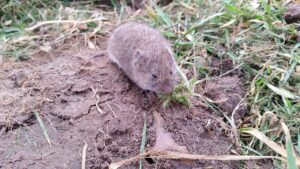
Voles are like little beavers. They use their incisor teeth to chew plants eventually killing the plants.
Voles are destroying landscapes. The increased numbers of voles correlate to four extremely rainy years. It is known that voles can have periodic population explosions; voles will be a huge problem for a few years and suddenly they will decrease in numbers. Typical populations of voles are 4-6 per acre but during population irruptions, populations can be 20+ per acre.
Voles can be a big problem in apple orchards. Research in the late 1970s at VA TECH determined the impact of voles in apple orchards to be very important. Apple farmers have to constantly be alert for vole infestations.
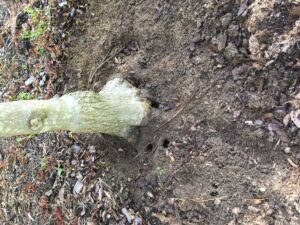
Vole tunnels are hidden under mulch at the base of plants. Moles use the tunnels to access plant roots and eventually kill plants.
Are Voles Killing Wild Rhododendrons?
I have visited many landscapes where voles are obviously killing landscape plants. I have also seen them correlated with dying wild rhododendrons in forests. So are the voles killing the wild rhododendrons? It has been speculated that the lack of fire in the mountains and lack of timber harvest has contributed to increasing rhododendron thickets. Others speculate that rhododendron may be short-lived generally, and it is possible that the large plants we see in the forests today are reaching the end of their physiological longevity and getting several pathogens and diseases. Voles might just be one of their problems and this could be all very natural. These and other reasons may contribute to our seeing more wild rhododendrons being killed by voles.
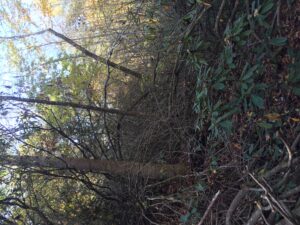
Vole tunnels are found beneath these dying rhododendrons in a local forest. Are the voles responsible or do they simply happen to be here? This site is over an acre!
Excessive Mulch = VOLES!
Time after time, no matter the species of plant that I am asked to evaluate, voles end up being the culprit killing the plants. The vole damage I have seen over the years is almost always associated with excessive mulch. Mulch that is over 2-3 inches deep provides the perfect place for voles to hide from predators. Besides, overmulching is bad for trees.
Controlling Voles is Difficult
What can people do to control voles that are killing their landscape plants? When controlling rodents there are three methods of control; habitat modification, trapping, or baiting.
Habitat modification is practiced in orchards. Growers mow grass to 2-3 inches between rows and use herbicide to kill grass around trees. Voles do not like open or bare ground because they are at risk of being preyed upon by birds of prey such as hawks and owls or mammals such as coyotes and foxes. In home landscapes affected by voles, I recommend clearing the ground around your landscape shrubs.
Trapping is a lethal control method that consists of mouse traps placed in tunnels, near tunnel entrances, inside a box in the flower bed with appropriate holes for entry by the vole. This reduces the risk of capturing non-target animals like birds and toads and snakes. Make sure the box is large enough so the trap can operate freely. Bait the traps with thick peanut butter and add a drop of vanilla. Rodents can smell vanilla from a distance.
Check the traps regularly (twice a day– early morning and just after dark is best – this is when voles are most active). Clean up dead voles to reduce odor and to avoid attracting predators.

Trapping voles is similar to trapping mice. Put a mouse trap baited with sunflower seeds and cover the trap and hole with a clay flower pot.
Baiting is another way to lower vole populations. Baits such as Ramik Green containing the active ingredient Diphacinone .005 percent are used. Read the entire label before using any pesticide. Place the appropriate amount of bait based on the directions on label. Determine areas where meadow voles will most likely find and consume the bait. Put the baits in exclusionary devices. These boxes prevent the bait from getting eaten by non-target animals. Put the bait stations under sheds, porches, and other out-of-the-way areas. The bait nuggets are hot-extruded so they are weather-resistant.
The question of secondary predator poisoning comes up often when discussing baiting rodents. The risk is real. Avian and mammalian predators (and snakes) can ingest sub-lethal and lethal doses of rodenticides from consuming sick and dead voles (and other rodents). There is a risk of secondary poisoning of wildlife, but no one seems to be able to say with certainty how large the risk is.
It is understood that most rodents that consume baits will get sick and die underground and out of the reach of predators. However, some percentage will consume a sub-lethal dose and they may be sick and lethargic and more susceptible to predation. That is probably how the poison gets to the predator. Then biomagnification takes over and the predator accumulates more and more toxin in its tissue and liver and gets sick. The predator either ends up in a wildlife rehab center or just outright dies of secondary toxicity. If you follow the directions on the rodenticide label and use it with exclusion boxes under buildings and away from predators, you can minimize the risk to non-target wildlife. But the use of toxicants is a personal choice for the landowner.
Habitat modification is the simplest action gardeners can take to control voles. Clear the ground 18″ around your plants. Mulch gives voles a place to hide while they eat your plant roots.
Trapping with simple mouse traps in exclusion boxes is a lethal control method that won’t put predators at risk. Baiting is effective but carries risks. Habitat modification is often the simplest and most effective way to discourage voles.





